It’s that time of year again when many homeschool families are gearing up for the new year, making plans, and ordering curriculum. Today I want to share a Mystery of History review and 5 reasons we love Mystery of History. Plus I’ll give you an inside peek into how we used it with multiple kids.
This post contains affiliate links, which means at no extra cost to you, I may receive a small commission from purchases made. Please see our disclosure policy.
Mystery of History Review
Before I can give you a complete Mystery of History review, you might want to know a bit about our homeschool – that is, our homeschool methods or style.
First, a few things you should know about our homeschool:
1. While not purists, we do follow a Classical Education Model.
2. Our family has been using the Mystery of History for seven years (as of 2015). We have used this curriculum through the grammar stage and now the logic stage, and it has served us well.
3. I have four energetic boys who have been captivated by our study of history! With their interest piqued, they are eager to continue studying the topics that have fascinated them the most.
Why do we love using MOH in our homeschool? Here are my top 5 reasons.
Mystery of History is Chronological
You wouldn’t read the chapters of a novel out of order. Why on earth would we teach history and do it out of order? Have you ever looked at how most traditional history curriculums approach the subject? In about second or third grade, the history textbook teaches about the Pilgrims just in time for Thanksgiving. You might have a little Revolutionary War excitement thrown in around February. And of course, a coloring sheet on Abe Lincoln for his birthday. Really? Kids can handle the real story, in order, from the beginning!
I am a certified social studies teacher with classroom experience, and it pained me to see how most middle schoolers entered my classroom at the beginning of the year — totally bored to death with history and geography! But of course they think it’s boring. A mishmash of dates and names to memorize without a coherent flow would make anyone frustrated with the content. Not so with our homeschool. The boys ask to do more than one lesson many days because it is just so very interesting. Who doesn’t like a good story?
With MOH, my kindergartener and preschoolers and I started with the very beginning of Creation and progressed from there. Of course, the first time through with mostly young children, we could skip certain topics that were just too deep for them. But because this curriculum is chronological, my kids have a good basic understanding of the whole flow of world history. I can’t say I had that until college!
Mystery of History has a Christian World View
This curriculum is written from a Christian World View. We loved learning the Biblical stories right in line with world history. This kind of study fights against the compartmentalization of our faith. And Biblical history makes so much more sense when you know what’s going on in the broader world at the same time. As a Christian, I believe that all of human history is God’s story of redemption. This curriculum supports me in my endeavour to pass that worldview on to my kids.
Mystery of History Can Be Used With Multiple Ages
This fall we will study the third volume of MOH with a 7th grader, 6th grader, 5th grader, 2nd grader and toddler 🙂 The beauty of this curriculum is that instead of juggling four different levels and topics of “graded” history curriculum, we can all enjoy learning together. Of course I have a different set of expectations for my 2nd grader than my middle schoolers. But this curriculum gives activities, projects, extra reading resources, and map activities that are divided among Younger, Middle, and Older student levels (in keeping with the Classical Education Model). The more subjects that can be learned as a group, the better.
Mystery of History is Open & Go
If you try to use curriculum that was written for a traditional classroom, you may have to wade through excessive teacher’s manuals. The MOH is a breath of fresh air in this regard. I have followed the book’s recommendations to copy the maps prior to the start of the school year. This has been helpful, but it’s not required. Prepping timeline materials is also helpful. But really, this curriculum is “open & go” — no need for lesson plans or detailed prep work! There is plenty to do each day by listening to the lesson, checking out the atlas or a good history encyclopedia, and completing timeline work. If you want to do extra activities, then go for it! If you’ve got to much going on that day, not a problem. I find this curriculum very user-friendly and not a stressful option at all from the homeschool mom’s point of view.
You can find made-for-you lesson plans for The Mystery of History at Homeschool Planet by clicking the button below.

Find lesson plans available for this product at Homeschool Planet. Sign up for a 30-day FREE trial.
Mystery of History is Cost Effective
I love the idea of a curriculum that can be used over, and over, and over again without extra cost for each child. And because MOH is meant to be used in three cycles during your child’s schooling (Young/Grammar Stage, Middle/Logic Stage, Older/Rhetoric Stage), with ever-increasing levels of understanding and depths of study, you can feel confident buying these books once for your kindergartener and use them all the way through!
How We’ve Used It — then & now
Finally, I want to briefly share how our use of MOH has changed in these last seven years.
First — we use the audio version now. It saves my voice and the boys like to listen to Linda Lacour Hobar read the lesson. While they listen, they draw a picture in their history timeline notebook with the date and lesson title. If you don’t homeschool, you could listen to the audio version in the car! Great resource.
Second — when I had four littles and we started Volume I, we did the super large timeline on the foldable board. The boys loved it!
Now that they’ve grown older, they prefer their own hand-drawn timelines in three-ring binders. They enjoy looking back and reminiscing about their lessons.
Third — we were heavy on activities when the kids were little. We loved creating salt dough maps, Viking masks, and cuneiform writing. These days we haven’t done as many projects. Looking forward, we’re going to incorporate more historical fiction and biographies relating to our MOH study. I also want to focus on narration and and a short written analysis of each lesson this year.
I highly recommend this curriculum and am confident that my children are receiving a solid history education. I only wish it had been around when I was their age!
Want to Know How Story of the World Compares?
We’ve used both MOH and SOTW in our homeschool! I’d love to show you the similarities and differences of these two popular homeschool history programs – Story of the World or Mystery of History.
[thrive_leads id=’7444′]
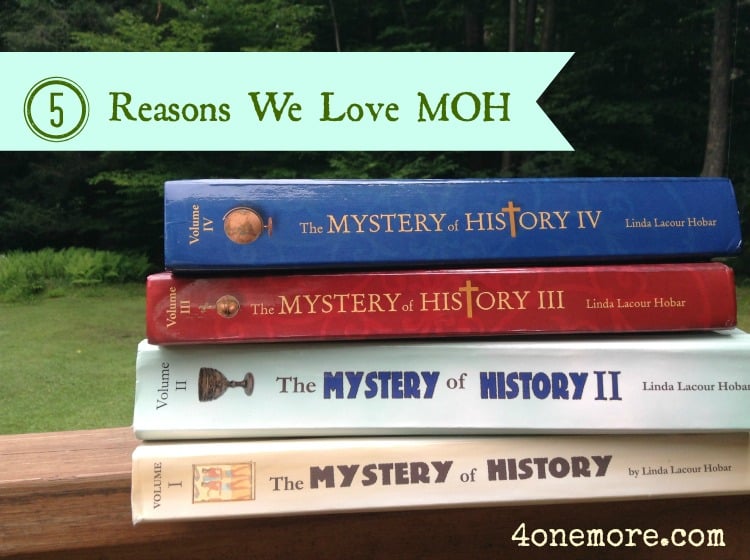
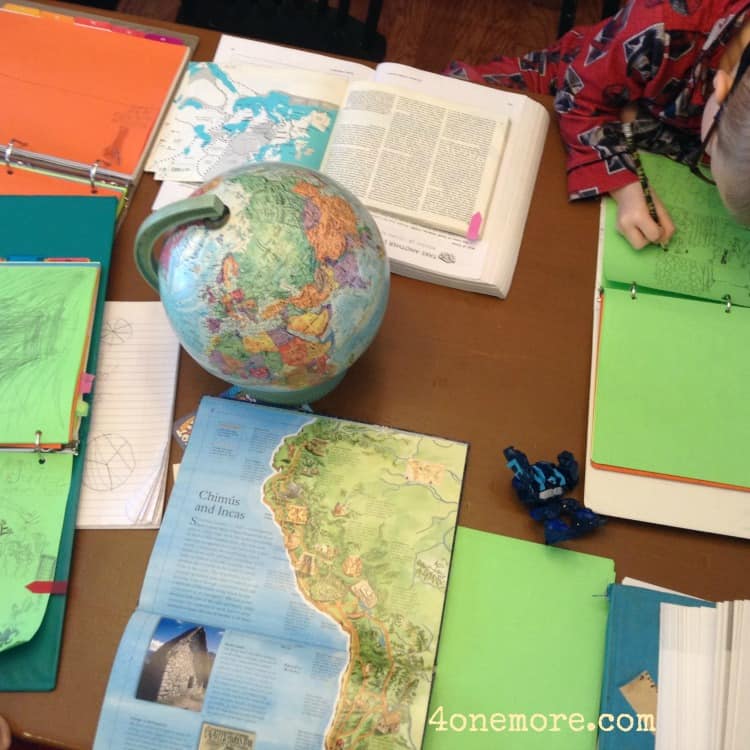



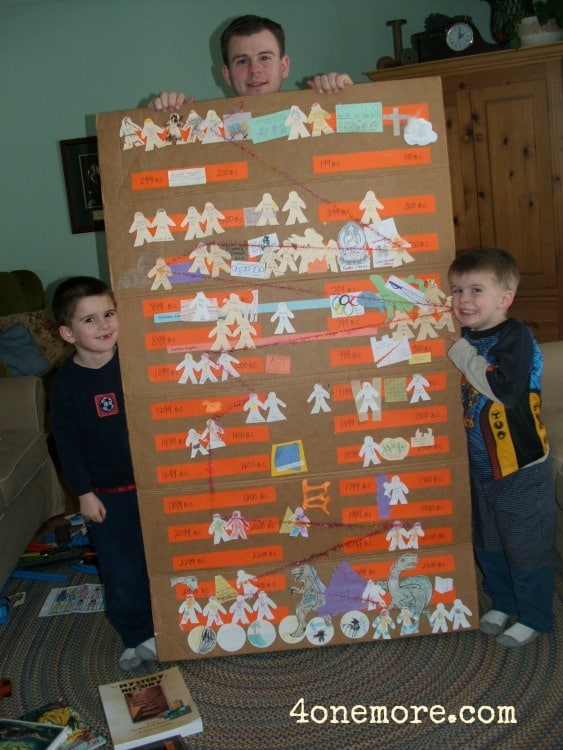
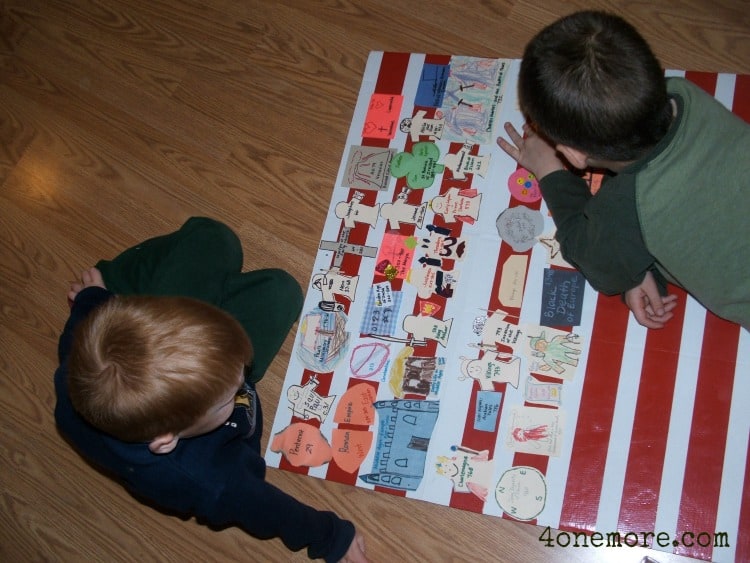
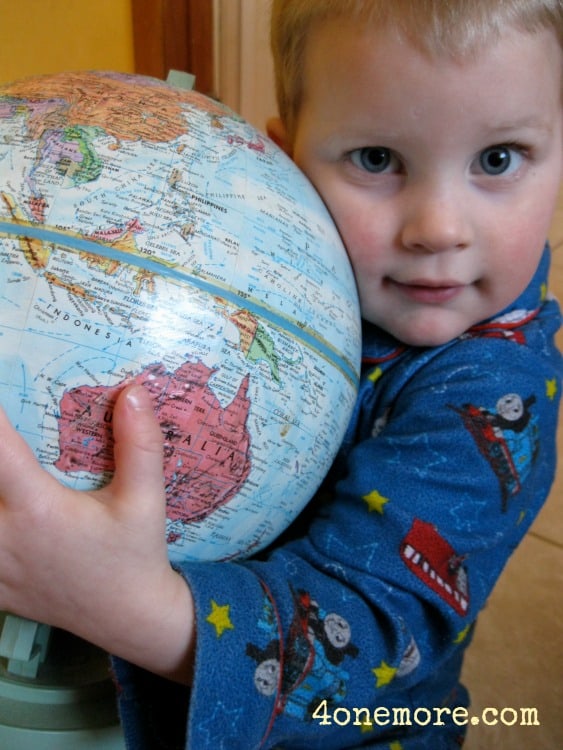

Hi, thank you for your post on MOH. I am so conflicted with whether I should teach my children history together chronologically or if I should let them each have their own traditional history at grade level. I have five children ages 9, 7, 5, 2 and 1. I homeschool 3 of them and feel overwhelmed most days, especially with the toddlers distracting me. Also, why not teach American history first so that they have knowledge and appreciation for their country? Thank you.
Hi Angela! Thanks for stopping by and commenting. I understand your dilemma! There are so many subjects that have to be individual and per grade level, that in our home, it simplifies life to have everyone together for some. But I feel your pain with distracting toddlers 😉 And we still teach American history all along as it relates to current events, holidays, personal family history, and such. Just not in a “official” traditional way. I found teaching American history to my public school 8th graders very difficult because they didn’t have a grasp on chronological world history. You really can’t understand the “why” or “how” or “why now” of US history if you study it in a vacuum. So, in short, yes — definitely don’t neglect American history, but I wouldn’t worry about a formal study of it until you reach that point, by about the 3rd & 4th year of the MOH cycle.
Thank you for your reply 🙂 What would you suggest to buy along with MOH 1, considering a tight budget. A Bible atlas and any other children’s books or novels geared towards younger children?
Hi Angela, We enjoyed using the Kingfisher Book of the Ancient World along with the MOH lessons. We used the resource list in the MOH book and found books at the library to go along with what we were studying. I have purchased the Kingfisher History Encyclopedia this year for my older kids to do additional study. But I think if you do a homemade timeline, read the lessons, consult an atlas or globe, and do suggested activities if you want, the younger kids will do great!